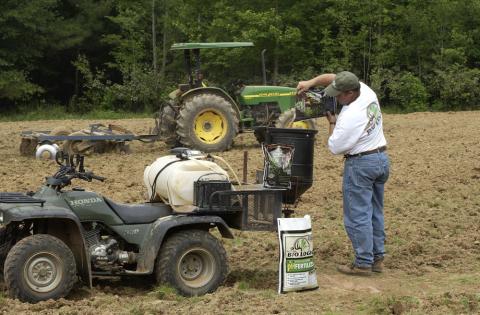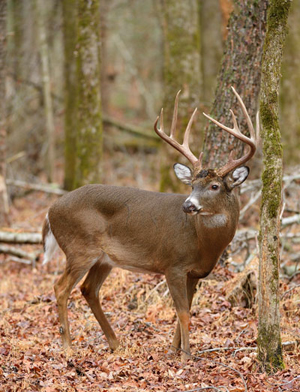 Text and photos by Tes Randle Jolly | Originally published in GameKeepers: Farming for Wildlife Magazine. To subscribe, click here.
Text and photos by Tes Randle Jolly | Originally published in GameKeepers: Farming for Wildlife Magazine. To subscribe, click here.
Unlike the way many humans interact, whitetails don’t need wifi and social media to communicate with other deer. We connect, work, play, do business and fill day to day needs with finger taps and swipes on smart devices. We socialize with friends, family and followers with screen encounters exchanging emoticon-spattered texts, status posts, photos and videos. Even romance can be found with a biography, profile picture and a few page clicks.
So, how do deer communicate and interact with other deer? Think of a deer’s social media platform as its entire body. With it they communicate in three ways—visually, vocally and scent-based communication. These may work in conjunction or individually.
A deer’s world is highly influenced by smells produced by internal and external glands. Each plays a specific and essential role in deer communication. Their olfactory messages act to alert, calm, frighten, identify gender and rank, establish social structure, revealing breeding status and health condition and aid in day-to-day survival.
Hormones are chemicals in the body that regulate some function. A whitetails’ scent gland system produces chemicals called pheromones. These are special hormones that trigger a social response in animals of the same species. Scents that reach a deer’s nostrils can be chemically identified and measured. However, the clues to the significance and interpretation of the message are primarily determined through observation of deer behavior and reactions to those specific chemicals, which leaves some conclusions open to debate.
The following photo essay offers gamekeepers information on common deer scent glands—location, characteristics and function in whitetail communication. Acknowledgement and thanks go to noted whitetail authority, Joe Hamilton, wildlife biologist and founder and Senior Advisor of the Quality Deer Management Association. Hamilton shared his thoughts and expertise from decades-long whitetail research, management and observations.
“IT’S ABOUT CREATING A LEGACY FOR ALL FUTURE GENERATIONS. SUBSCRIBE TODAY”
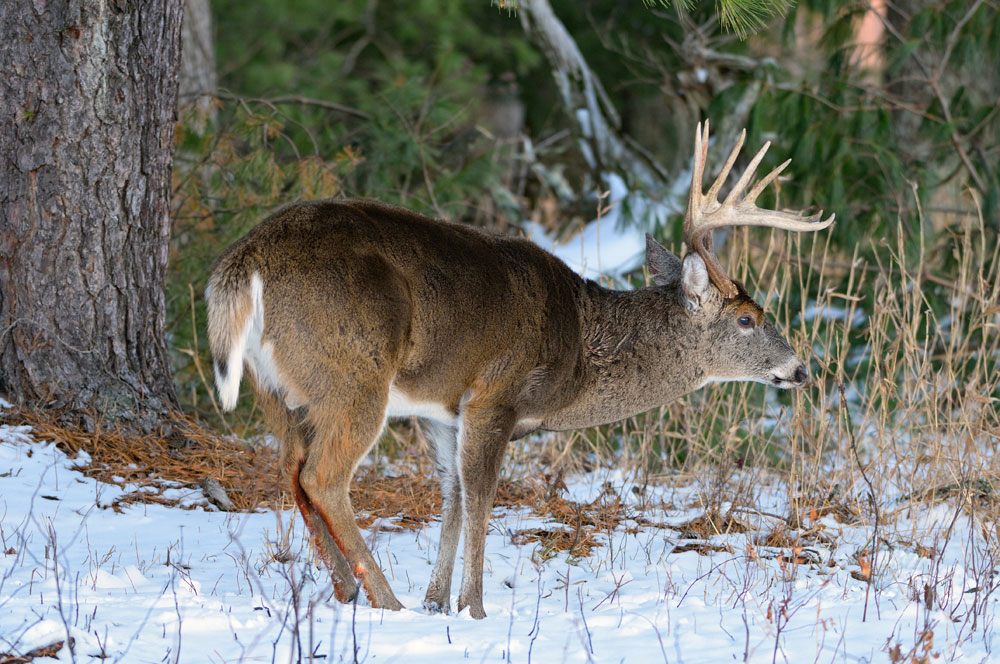
Tarsal
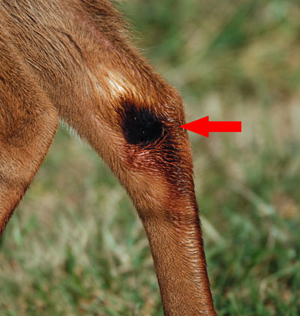 Most deer hunters are familiar with the tarsal gland and its powerful scent. Some hunters remove the tarsals and hang them near a scrape or stand site. Scent companies offer bottled tarsal glands immersed in scent. The tarsal gland is a pad of stiff hairs located on the inside of each deer’s rear leg at the hock. At the base of each hair is a fat, or sebaceous, gland that produces an odorless oily deposit that coats the hair creating a stage for scent dissemination.
Most deer hunters are familiar with the tarsal gland and its powerful scent. Some hunters remove the tarsals and hang them near a scrape or stand site. Scent companies offer bottled tarsal glands immersed in scent. The tarsal gland is a pad of stiff hairs located on the inside of each deer’s rear leg at the hock. At the base of each hair is a fat, or sebaceous, gland that produces an odorless oily deposit that coats the hair creating a stage for scent dissemination.
All deer all year through can flare their tarsals. Scent is released by flaring the tarsal hairs into a rosette.
Whitetail deer of all ages, urinate over their tarsals (rub-urinate) throughout the year, bucks more so during the rut. Fawns may rub-urinate to locate their mother. As bucks rub-urinate during the rut, the dark tarsal stain may extend down the back of the legs. The tarsal’s signature pungent odor is actually produced when chemicals including pheromones in the urine and bacteria on the hairs combine. The resulting blend coats the oily hair and may stain the tarsal to a dark brown. The odor may be so strong on rutting bucks that humans can smell it from a distance.
Rub-urinating behavior creates a unique identifier. The exact mix of bacteria is distinct to each deer. This can create an individual scent that other deer recognize, likely carrying information about the deer’s gender, health condition, dominance rank and reproductive status. Researchers have identified chemicals that are present only in buck or doe tarsal glands and different chemicals on older, dominant bucks as opposed to younger, subordinate bucks. Bucks may rub-urinate in a scrape, leaving a “calling card” for other deer. Does may rub-urinate in or near scrapes to communicate their readiness to breed.
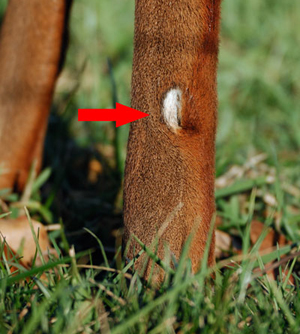 Some bacteria in tarsal glands can cause illness and infection in humans. Always wear rubber gloves or wash your hands thoroughly after coming in contact with the tarsal gland of a harvested deer. However, the adage that the tarsal glands must be immediately removed after harvest at the risk of tainting the meat is an old wives’ tale.
Some bacteria in tarsal glands can cause illness and infection in humans. Always wear rubber gloves or wash your hands thoroughly after coming in contact with the tarsal gland of a harvested deer. However, the adage that the tarsal glands must be immediately removed after harvest at the risk of tainting the meat is an old wives’ tale.
Metatarsal
The metatarsal gland is a tuft of white hair growing in one direction and located on the outside of each lower hind leg. They do not secrete scent for communication. Metatarsals are larger on northern whitetails and mule deer. The size difference leads some researchers to believe metatarsals function in a thermoregulatory fashion as cold sensors so deer can regulate body temperature and conserve energy.
Interdigital
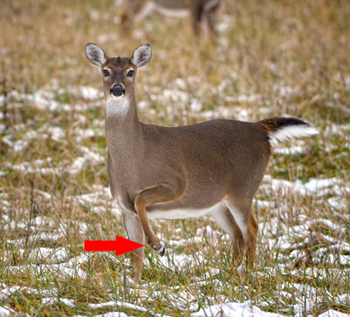 Deer have four interdigital glands, one between the “toes” of each hoof. The gland is a small sac that exudes a cheesy, yellowish fluid with an odor similar to sour milk. As deer walk or bound the fluid is dispersed onto the ground and dissipates at different rates, leaving scent trail markers that allow deer to follow one another or relocate the correct trail when lost.
Deer have four interdigital glands, one between the “toes” of each hoof. The gland is a small sac that exudes a cheesy, yellowish fluid with an odor similar to sour milk. As deer walk or bound the fluid is dispersed onto the ground and dissipates at different rates, leaving scent trail markers that allow deer to follow one another or relocate the correct trail when lost.
Interdigital secretions help deer interpret another deer’s direction and timing of travel through an area. Research shows many compounds are found in buck interdigital secretions. These may increase with a rise in testosterone levels and act as chemical signals that alert other deer to the presence of a mature buck. Interdigital secretions from does may indicate their readiness to breed as evidenced by a buck “bird dogging” an estrus doe’s trail.
Every hunter has experienced the dreaded foot stomp. When an alert deer foot stomps, increased interdigital secretions may alert other deer who pass by of possible danger. On the other hand, some scent companies offer interdigital scents as masking scents or to draw deer to a hunting location.
“IF YOU LOVE WILDLIFE AND WANT TO IMPROVE HABITAT, SUBSCRIBE TODAY!”
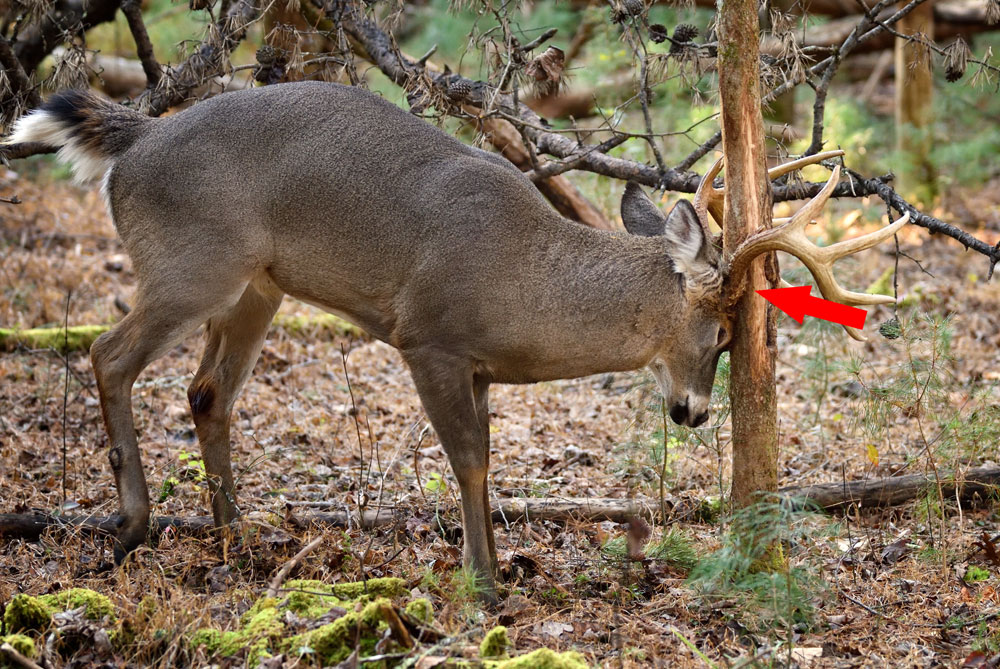
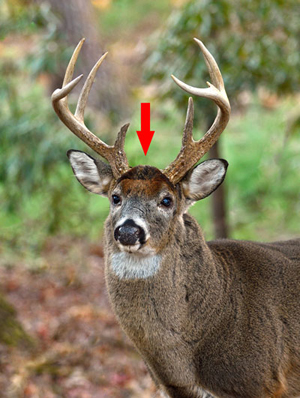 Forehead
Forehead
The forehead gland is situated between the deer’s eyes and the antler pedicles. It performs important functions during the rut. The gland is used primarily by dominant bucks during pre-rut in combination with rubbing and antler thrashing. The oily, musky smelling secretions often stain a rutting buck’s forehead hair dark brown, black or reddish brown.
A buck rubbing trees or brush will stop and rub its forehead gland on freshly exposed wood or a reworked rub, often sniffing the scented area. Does may mark rubs with their forehead gland. Forehead rubbing behavior leaves a long lasting “signature” and increases with a buck’s age which suggests the secretions communicate age, social ranking and breeding status.
Preorbital
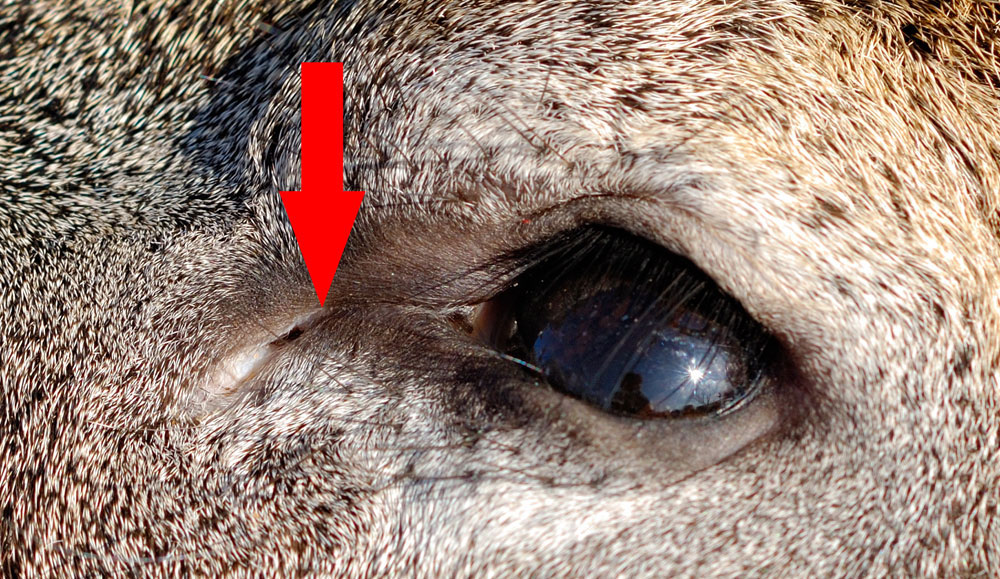
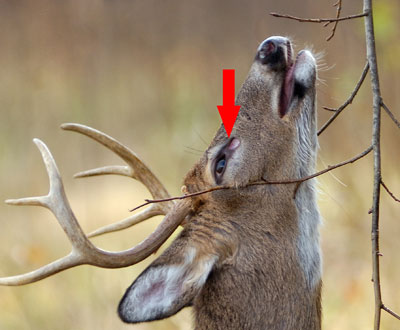
The preorbital, or “lachrymal gland,” is a slit situated at the eye’s inside corner. The tear duct secretes small amounts of clear fluid and likely serves two functions: scent communication and lubrication. The fluid helps flush debris and cleans the eye as evidenced when a green crusty buildup appears on deer living in seedy environments. Bucks and does rub the gland on overhanging limbs or twigs at scrapes and rubs, leaving identification and status markers. The gland is muscle controlled and may open to emit odor during the rubbing behavior. A doe’s preorbital gland may dilate while her fawn nurses. Deer seem to enjoy the action and spend time engaging in the activity.
Nasal
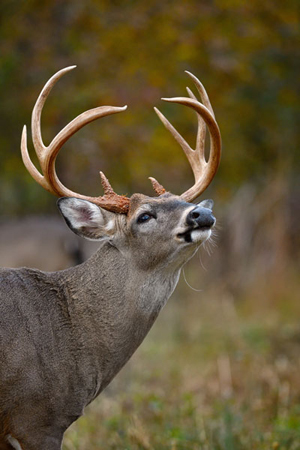 Whitetails have tracked the earth for millennia; their survival success is in large part due to an extraordinarily sensitive sense of smell. A deer’s nose is the primary olfactory system for processing communicative odors produced by other scent glands, in urine and other secretions. Nasal glands are almond shaped and located inside the nasal passages. They function to help a deer detect odors and aren’t known to produce scent. The glands serve as Chapstick® for the inner nose, keeping it moist and well-lubricated. The mucus produced captures scent molecules that deer process and react to.
Whitetails have tracked the earth for millennia; their survival success is in large part due to an extraordinarily sensitive sense of smell. A deer’s nose is the primary olfactory system for processing communicative odors produced by other scent glands, in urine and other secretions. Nasal glands are almond shaped and located inside the nasal passages. They function to help a deer detect odors and aren’t known to produce scent. The glands serve as Chapstick® for the inner nose, keeping it moist and well-lubricated. The mucus produced captures scent molecules that deer process and react to.
When a buck receives chemical signals, or pheromones, contained in doe urine, the airborne chemicals entering the nose embed in the mucus where nerve fibers in the nasal tissue carry the signals to the olfactory nerve and onto the olfactory lobe of the brain. Through this process a buck is able to interpret whether a doe is in estrus.
To a hunter, the whitetail’s sense of smell is both exceptional and maddening. Not getting “busted” by that snout is the pinnacle consideration in every hunt strategy. Manufacturers offer countless products designed to mask, minimize, eliminate and cover human scent. The wise deer hunter does all they can to remove or control human scent, but knows being totally scent-free around deer is next to impossible. Hunters who consistently tag mature bucks know how to beat a deer’s nose - do everything possible to reduce human odor and always use Mother Nature’s scent dissipater, the wind.
“BECOMING A GAMEKEEPER IS NOT JUST THE BEST WAY TO PRODUCE GREAT HUNTING… IT’S THE BEST LIFE! SUBSCRIBE TODAY.”
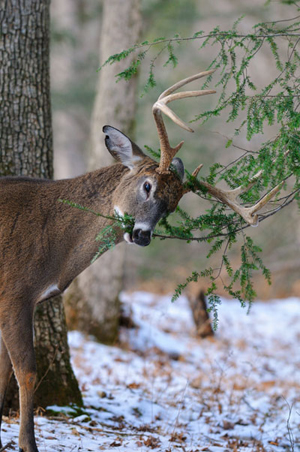 Salivary
Salivary
Salivary glands are inside the mouth in the gums, cheeks and roof of the mouth. They produce saliva containing enzymes that stimulate and aid in digestion. Saliva lubricates the mouth and tongue. Licking keeps the nose surface moist and helps deer scent danger in the area. When rubbing a tree a buck often licks the rubbed area. Salivary enzymes leave identifying information behind. At scrapes a buck will typically lick twigs and branches overhead. A buck makes a licking stick by taking the tip of a small twig or sapling into his mouth and fraying the ends.
To illustrate the importance of the scent gland system in whitetail communication, picture a buck at a scrape. The buck antler thrashes overhead limbs leaving forehead scent. He paws the ground and scent signals are deposited by the interdigital glands. The buck bites or chews the end of an overhanging limb leaving saliva scent markers. The buck rubs his preorbital glands on the twig’s tip adding more scent. Finally, the buck urinates or rub-urinates over his tarsals glands into the scrape. The buck employs five scent glands in one behavior leaving a multitude of information behind for other deer.

 Forehead
Forehead Salivary
Salivary













